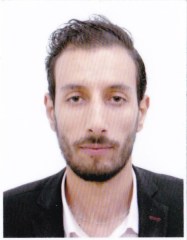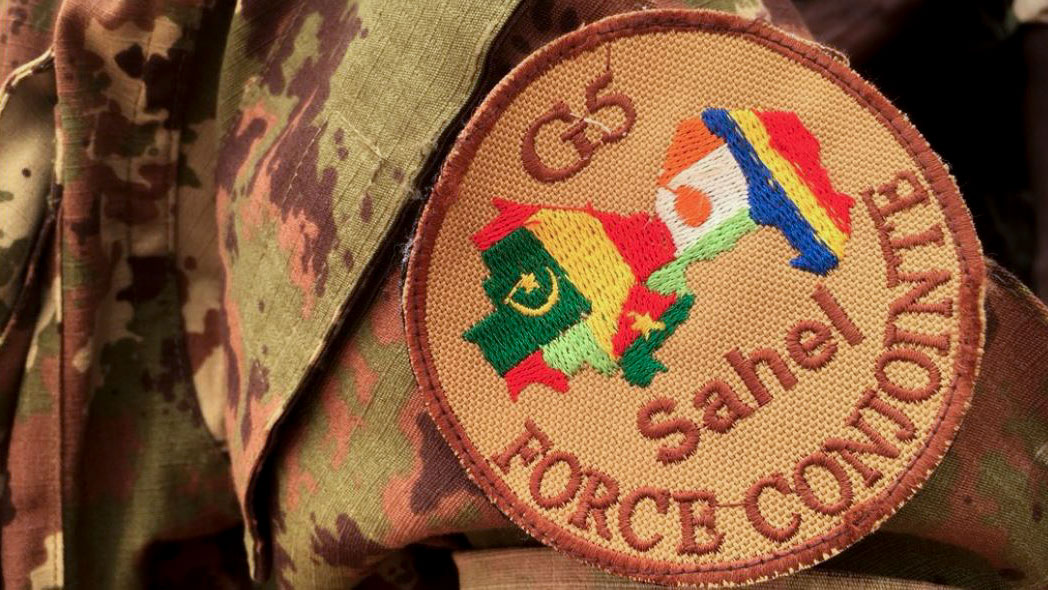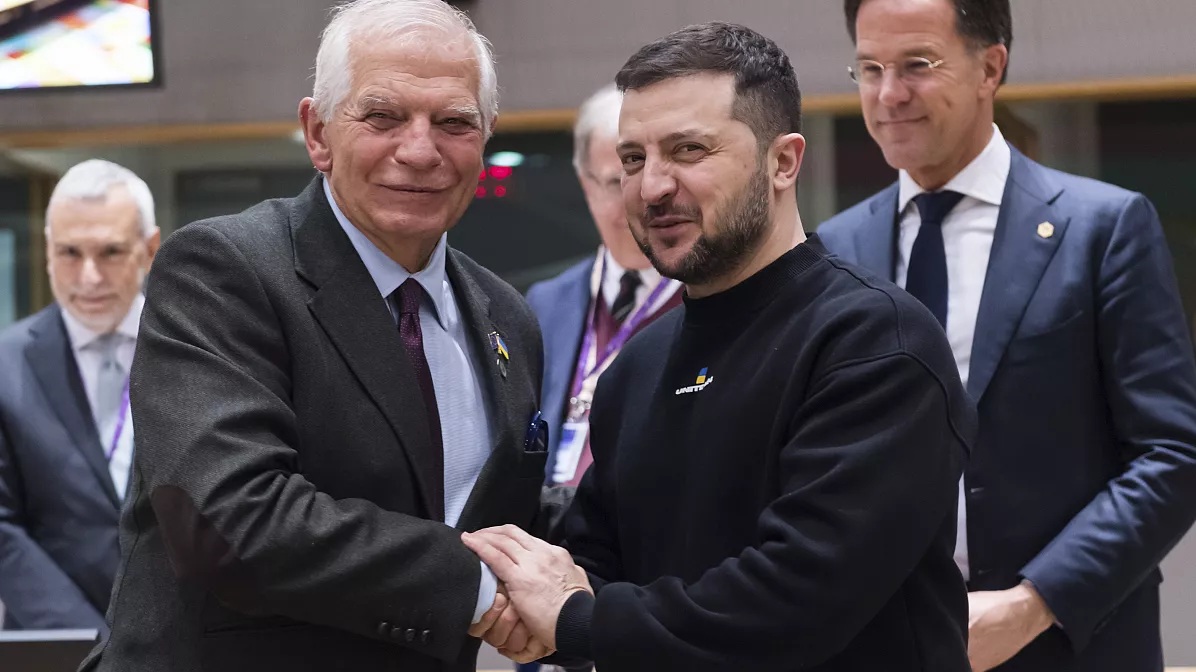By Dr.Mohammed Salah DJEMAL
Researcher at European Centre for Counterterrorism and Intelligence Studies / Germany and Netherlands
Publishing rights reserved to European Center for Counterterrorism and Intelligence Studies in Germany and Netherlands.
The Sahel region faces a series of threats for severalyears, the mostemblematic of whichisterrorism and the danger of jihadist groups.Thesethreats have contributed to destabilizingthisregion and in some countries accentuated the fragility of the state.Often, the weakness of democratic institutions and the partiallydysfunctionalrole of the security forces, the lack of securitystrategiesat the national level, the lack of financialresources, as well as conflictinginterestsvariousactors are preventing the establishment of modernisedsecurity structures.
To respond to the threat of jihadist groups, a new regional force has been created. G5 Sahel is the latest initiative taken by France to help foster cooperation to combat terrorism and jihadist groups in the Sahel. Created initially in December 2014, this organization embraces Burkina Faso, Chad, Mali, Mauritania and Niger, and is heavily supported by France.
The Sahel : A background on the Jihadist Groups
Jihadist implantation in the Sahel can be traced back to the end of the Algerian civil war (1991- 2002), which pitted security forces against Islamist armed groups (GIA). After years of fighting, reportedly claiming the lives of 60,000 to 150,000 people, Algerian authorities implemented the 1999 ‘Concorde civile’ that granted amnesty to thousands of GIA members. While most accepted amnesty, some militants created the Salafist Group for Preaching and Combat (GSPC) in 1998, and continued fighting the regime.1Hunted by Algerian security forces, and lacking popular support, the GSPC was however in need of backing. In 2006, the group pledged allegiance to jihadist organization al-Qaeda, and was rebranded al-Qaeda in the Islamic Maghreb (AQIM) in 2007. While AQIM elements in Algeria remained under military pressure, some members moved to northern Sahel and concluded alliances with local communities, mostly through marriage.2
This led jihadist groups to develop on a more Sahelian basis. According to Algerian security reports, out of 108 AQIM members in the Sahel identified in mid-2010, only 21 were Algerians. The Movement of Oneness and Jihad in West Africa (MOJWA), created in 2011, while including some North African members, was first led by Hamada Ould Mohamed Kheirou, a Mauritanian Arab, and was mainly composed of combatants from the Sahel countries. While referring to Osama bin Laden as an ideological reference, MOJWA also placed emphasis on West African figures such as Usman Dan Fodio, founder of the 1804 Sokoto Caliphate, in northern Nigeria.However, until 2012, and despite several attacks in Mauritania, “AQIM operations in Algeria still far exceeded the type and number of operations it carried out in the Sahara-Sahel”.3
Another most powerful jihadist group in the Sahel is Al-Mourabitoun, led by MokhtarBelmokhtar, a former key leader of AQIM who pledged his allegiance to Al-Qaeda since its creation in 2013. Since its inception Al-Mourabitoun has been responsible for numerous attacks in the Sahel and thus has been the target of many French and American operations, during which many of its leaders were killed.4
The Origins of the Sahel G5
Created in February 2014 with a light institutional architecture, the G5 Sahel was initially designed as a framework for coordinating and monitoring existing regional cooperation and international initiatives – including the European Union and the African Union (AU) – while coupling and bolstering security and development initiatives. Although it was not established as a security organization, the G5 Sahel had from the start a strong military focus. Even before it was officially created, a meeting of the heads of military staff of the five Sahel countries in July 2013 marked the starting point of enhanced cooperation on border management in order to bolster stability in the region.5The origins of the G5 are also to be found in the progressive reconfiguration of the French strategy, towards greater geographical comprehensiveness in the Sahel. France launched operation Serval following UN Security Council (UNSC) Resolution 2085 in December 2012, in response toBamako’s request for military assistance. Servalwas designed as an operation limited in time and resources. It ultimately stopped the offensive and liberated Northern Mali in 2013. However, as of 2014, violence resurged locally, leading to considerable numbers of internally displaced people. After the Malian Army was defeated at Kidal in Northern Mali, the withdrawal of Servalwas suspended in May 2014. Witnessing a multiplication of fronts, France ended Serval in Mali and Epervier in Chad (an operation that had lasted since 1986) in August 2014 and launched operation Barkhane, tasked with eradicating terrorist groups in Chad, Mali and Niger.6
Why a Common Force in the SahelianCountries ?
“In the face of the rise of extremism, efforts to meet the challenges are needed. We must go further to achieve the Sahel of defence,” G5 President Ibrahim BoukacarKeïta, mali, said in February 2014.7Chadian President IdrissDeby, whose army is engaged both on the Malian front and against Boko Haram in the Lake Chad basin, also mentions a sovereignty issue:”What we want is for European countries to give us the means. We ourselves will be on the front line in the fight against terrorism in the G5 space. That way, they’re going to save the lives of their soldiers”.8
A G5 official explained that “thecountries of the G5 are similar from all points of view and are all confronted to a very gravesecurity threat whether criminal (drug trafficking, weapons, illegal immigration) or coming fromjihadi organizations”. According to him, this initiative aims at reinforcing those five countriesin their military and infrastructure capabilities. He further explained that the road map of thisnew organization is based on negotiations between European Union states, particularly France,with the members of the G5 and focuses on fighting terrorism and illegal immigration. However,according to several observers the organization suffers from numerous problems including thefact it is tactically linked to the French military operation Barkhane in addition to the problem offinancing.9
The Joint Force of G5 Sahel (FC-G5S) as aStrategic Response
The Joint Force of the Group of Five of the Sahel (Force Conjointe du G5 Sahel or FC-G5S) is the latest initiative by African member states to reduce the threat of terrorism in the Sahel, a region that is often framed as an arc of instability. The FC-G5S – which includes Mali, Burkina Faso, Niger, Mauritania and Chad – was authorised by the African Union (AU) Peace and Security Council (PSC) on 13 April 2017 for a 12-month period, and was later – on 20 June 2017 – welcomed by the United Nations Security Council (UNSC),it was reauthorised by the AU PSC for a 12-month period on 12 April 2018.10
The joint force does not have a common doctrine that elaborates a theory of change underpinning its operations, it has developed a concept of operations (CONOPs), approved by the PSC on 13 April 2017. This mandate contains all the elements of a stabilization strategy – which combines CT with softer (traditionally civilian-led) tasks, such as facilitating humanitarian assistance and development. Several interlocutors conceded that these will not be the priority, and that the joint force is a purely military tool that will focus on CT. Other aspects of the mandate will be the responsibility of actors like national governments or MINUSMA. The current priority is to “detect and neutralize all jihadist groups of concern”.11
In its deployment, the AU PSC authorized the deployment of up to 5,000 military, police, andcivilian personnel.12 According to a joint announcement by the foreign ministersof the G5S countries, the total number for the planned troop deployment hasfluctuated up to 10,000 (including law enforcement and civilian components).13 The sevenbattalions would consist of 650 servicemen each. A police componentis also foreseen in the strategic CONOPS, but there is still a lack of clarity aboutits scope and mandate. For the time being, 105 police personnel are foreseen, 15in each battalion.14 Even if not clearly indicated in the strategic CONOPS at thisstage, the G5S chiefs of staff want these police units to be composed of 2-3 militarypolice (prévôté) and 12-13 criminal investigators.15
The force is largely military heavy:16 it has been scaled up to 10 000 troops, as well as a 105-strong police force. The military focus can, in part, be attributed to France’s eventual exit strategy from the region, which aims to transfer the task of fighting terrorism and organised crime from Barkhane to the G5 Sahel states. The force’s advocates argue that if it manages to patrol the borders with a more permanent security presence, it is possible that such a projection of force could tilt the balance of power against these groups on the ground, reduce their cross-border movements, and disrupt the illegal organised crime and trafficking networks that fund them.
While this strategy may contain these groups geographically and cut off their funding sources, it is unlikely to address the root causes of violent extremist mobilization. This is not to negate the role of the military, which is, of course, important in providing security guarantees and protection to the local population, who face violence and abuse from some of these jihadist groups. However, the current CT approach does not recognize the multifaceted strategies these groups use to mobilize civilians, and which often involve legitimacy-building tactics such as providing employment, local justice and basic services.17
Contrary to the multinational joint task force (MNJTF), which fights one, relatively unitary enemy, the FC-G5S confronts a region with dozens of armed groups. The CONOPs lists the following groups in the Sahelo-Sahara band: ISGS, Boko Haram, Ansaroul Islam, the Katibat of Gourma, JNIM, AQIM, Ansar Dine and the KatibatMacina. Jihadist insurgents are not easily identifiable and may be confused with bandits, self-defence militias or anyone who fits the profile and carries a gun.18The groups vacillate from hiding in the bush or the forest, between training camps and combat operations, to living among communities. They often have several identities, allegiances and alliances, resulting in a highly complex, fluid security environment. It has already been difficult for the Malian army to distinguish between terrorists and civilians, as well as terrorists from compliant groups – which are signatories to the Peace Accord. In the FC-G5S’s first operation (Hawbi), members of the Coordination of Azawad Movements (CMA) – a compliant group – were wrongly arrested.19
Speaking about the main devoted activities ;The first FC-G5S operation took place in a zone stretching between Anssongo andDori, which is situated in the tri-border area of Mali, Burkina Faso, and Niger. Theoperation, named Hawbi, was conducted from the end of October to the beginningof November, 2017, and assembled 350 soldiers from Burkina Faso, 200 Nigeriansoldiers, and 200 Malian soldiers. Operation Barkhane supported with 180soldiers.20 According to a FC-G5S roadmap from October 2017, a total of six operations areplanned until October 2018. The target date for reaching full operational capabilityis March 2018, which is when all the cross-border operations are intended to becommanded by the FC-G5S.21
The G5 sahel Joint Force Challenges
The G5 countries’ serious problems concerning military budgeting, corruption and waste arealready influencing the status of the G5 Joint Force. As the G5 lobbies more funds, the hefty€423 million price tag has come under increased scrutiny. In October 2017, French officialsconceded that the budget can be reduced to closer to €250 million, which raised seriousquestions as to the legitimacy of the original €423 million. Similar to previous militarycostings, details are conspicuously absent from the budget.22
On a more technical level, another major concern is the lack of an overarching G5sinstitutional framework for channeling and disbursing donor contributions. At the recent G5Heads of State Conference, the G5 and AU jointly proposed the creation of a Trust Fund toreceive all contributions to the Joint Force, but did not provide details ongovernance,accountability, and oversight. Consequently, donors widely perceived it as a major fiduciaryrisk, and elected to channel aid bilaterally. Because the FC-G5S mandate was endorsed bythe AU Peace and Security Council, the EU had the option to channel its €100 millionthrough the AU, however elected to channel its funding through France’s internationaltechnical cooperation agency, Expertise France.23
The prospect of having the remaining funds channeled bilaterally also carriesrisks due to the lack of established accountability mechanisms and limited administrativecapacity. As most militaries rely on cash-based systems, funds are often skimmed as theymove down the ladder, and soldiers are not paid on time or not paid at all. Furthermore,“ghost-soldiers” plague payrolls and divert funds to fictitious soldiers. Ultimately, the fundsneed to be disbursed to the battalion-level and sector commands, meaning that one of thebiggest threats to the FS-G5S is that soldiers will lack sufficient means to conduct efficientoperations.24
Recommendations
-G5 countries should progressively work to improve defense budget transparency,and provide legislatures with detailed and timely information on military expenses.
-G5 countries should create research institutions that take care of the accurate statistical aspect, considering that controlling numbers means controlling policies and strategies that can confront jihadist groups.
-The G5 should redouble the support of intelligence agencies, strengthen the Anti-terrorism branch and intensify coordination with the countries of the Maghreb in this aspect. Getting accurate and good information means a rational and effective performance in the fight against extremist groups.
References
1-Hamza Cherbib, ” Jihadism in the Sahel: Exploiting Local Disorders “, Mediterranean Yearbook 2018.
https://www.iemed.org/observatori/arees-danalisi/arxius-adjunts/anuari/med.2018/Jihadism_Sahel_Hamza_Cherbib_Medyearbook2018.pdf
2-Ibid.
3-Ibid.
4-Djalil Lounnas, ” TheTranmutation of Jihadi Organizations in the Sahel and the Regional Security Architecture “, Furure Notes, No.10, April 2018.
file:///C:/Users/Islem_X/Downloads/MENARA_Future%20notes%2010_18%20(1).pdf
5-Brice Didier, ” The regionalization of counter-terrorism strategies in the Sahel: the G5 as a challenge for translantic relations “, College of Europe Policy Brief, No.10, June 2018.
file:///C:/Users/Islem_X/Downloads/didier_cepob_10-18%20(3).pdf
6-Ibid.
7-Rodrigue Arnaud Tagnan, ” Le G5 Sahel, pour luttercontre le terrorisme “, La Croix, 13/04/2017.
https://www.la-croix.com/Monde/Afrique/Le-G5-Sahel-pour-lutter-contre-terrorisme-2017-04-13-1200839351
8-Ibid.
-9DjalilLounnas, ” The Tranmutation of Jihadi Organizations in the Sahel and the Regional Security Architecture “, Op.Cit.
10-NatasjaRupesinghe, ” The Joint Force of the G5 Sahel : An Appropriate to Combat Terrorism ? ” , Conflict Trends, August 2018.
https://www.accord.org.za/conflict-trends/the-joint-force-of-the-g5-sahel/
11-Ibid.
12-European Union Training Mission to Mali (EUTM Mali), “Advisory Task Force EUTM Mali,” 11 October 2017.
13-JeuneAfrique, “G5 Sahel :enfinune force conjointe à l’issue du sommet de Bamako?,” 30 June 2017.
14-European External Action Service, Options paper for CSDP support to the G5 Sahel Joint Force, Council of the European Union,2017.
15-United Nations Security Council, Report of the Secretary-General on the Joint Force of the Group of Five for the Sahel, 2017.
-16NatasjaRupesinghe, ” The Joint Force of the G5 Sahel : An Appropriate to Combat Terrorism ? “, Op.Cit.
-17Ibid.
18-Ibid.
19- Ibid.
20-RFI, “Mali: une première opération du G5 Sahel sans accroc,” 4 November 2017.
21-EUTM Mali, “Advisory Task Force EUTM Mali,” 11 October 2017
22-Brandon Lock, ” Why Defense Accountability is the G5 Joint Force’s Achilles Hell ” , Report, Brussels International Centre, March 2018.
23-Ibid.
24-Ibid.
European Center for Counterterrorism and Intelligence Studies in Germany and Netherlands.
Dr.Mohammed Salah DJEMAL





